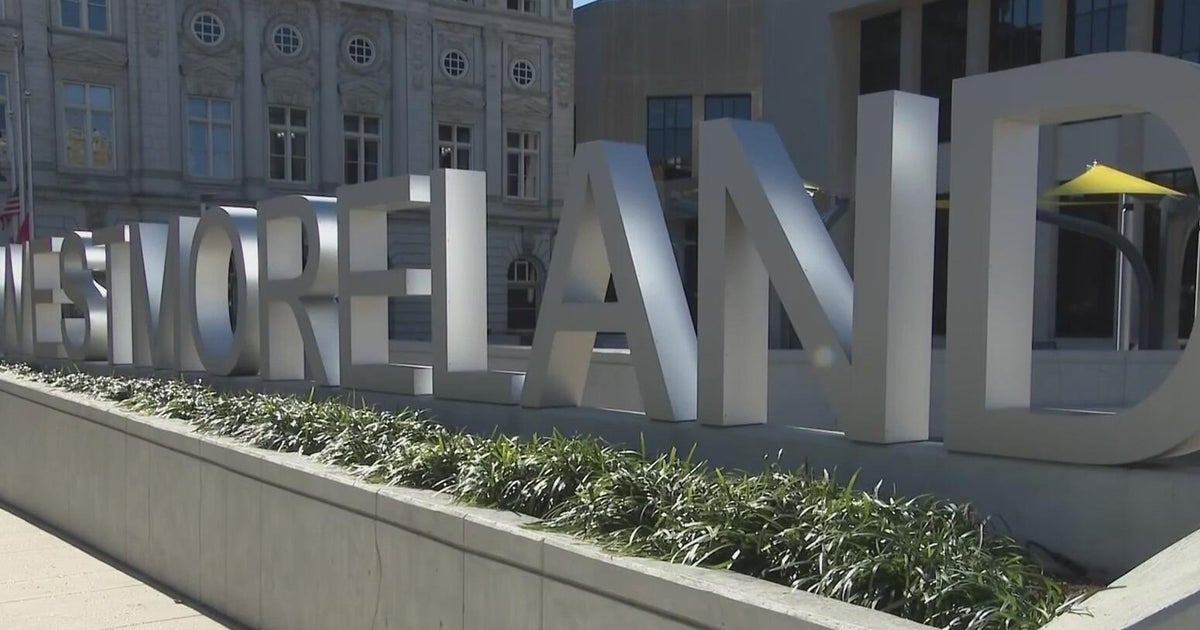Inside efforts to restore the Chesapeake Bay's oyster population
As the sun rises over the Little Choptank River in Dorchester County, Maryland, a crew is hard at work responding to a crisis underwater that's been unfolding for centuries: the declining population of the native Chesapeake Bay oyster.
Due to over-harvesting, pollution and disease, more than 99% of the historic native oyster population has disappeared.
The state of Maryland has committed to a restoration plan looking to rebuild oyster colonies in five tributaries on its side of the bay.
Inside 3,000-gallon tanks are millions of future oysters — work done by the Oyster Recovery Partnership, a nonprofit dedicated to Chesapeake Bay oyster restoration.
"The work that we're doing is all in Maryland at this point, working in tributaries within the bay to restore those oyster reefs," said Ward Slacum, executive director of the Oyster Recovery Partnership. Slacum said oysters are important to the cultural heritage of Maryland.
"For one, oysters being the keystone species, it means that they're really critical to not just the ecosystem of the bay, but all the other animals that reside in the bay. But the harvest of those oysters also contributes to the economy," he told CBS News' Skyler Henry.
Maryland's seafood industry is responsible for bringing in nearly 600 million dollars annually. Businesses like Faidley's Seafood in Baltimore, Maryland, are directly dependent on the bay's overall well-being.
"Without the oysters, we don't have anything. We need that oyster to siphon and clean the water in the Chesapeake Bay," Dayme Hahn said.
She is the fourth generation to run Faidley's, and she said the current oyster population takes nearly a year to do the same job that it could do in 24 hours hundreds of years ago.
"We can't do what we do in providing fresh local without fresh local. So the health of the Chesapeake Bay is key to our success. It's key to our future," Hahn said.
The Faidley family has owned and operated the market for more than 130 years.
"Through the 1800s, early 1900s, the oyster industry was really what defined Baltimore. A lot of areas were backfilled with oyster shells. They used crushed oyster shells. So we were using the shells, not realizing that they needed to go back into the Bay," Hahn said.
It wasn't until the1950s when scientists discovered the link to the bay's declining health. "We were depleting our supply, and that these oysters needed old oyster shells in order to grow new baby oysters, the spat," Hahn said.
But with the shells shucked and the oysters dressed, there was no easy way to get the used shells back into the water. Faidley's is one of about 400 area seafood restaurants, markets and public drop sites that has been recycling their shells through the Oyster Recovery Partnership. ORP crews pick up the shells and bring them to the University of Maryland's Horn Point laboratory to be processed over the next year. The shells are cleaned and loaded into containers and placed into tanks so mature larvae can be inserted inside.
"They filter the water. They create habitat. They are also spawning and adding to the population. And they're also helping with shoreline stabilization as well as nutrient sequestration (PH). So overall, they're extremely, extremely valuable. They're the little kidneys of the bay," Stephanie Alexander, the laboratory's hatchery manager, said.
In about two weeks, the fertilized eggs will be mature enough to be drained from their indoor incubators. The bundle of larvae will be set in one of the outdoor tanks that's filled with the recycled oyster shells. The goal will be to get the larvae to attach to the shells, where they'll grow for life. It's a process known as 'spat on shell.' After another week, they will be loaded up onto a boat and released into the water.
But these vital organs of the Chesapeake need some assistance to repopulate at the rate needed to keep the bay clean. Around 25,000 adult oysters a year are rotated through spawning tables.
"They're put on reefs which is basically a hard substrate. But we don't wanna put 'em in the mud. Because if you put oysters in the mud, they're gonna sink and they're gonna die. And then all of our efforts for nothing," Alexander said.
OPR said they've planted around 8.5 billion juvenile oysters back in the waters and have rehabbed reefs in two tributaries, with three more to go. It is set to be completed by 2025.
It's a multi-million dollar operation paid by the state of Maryland, NOAA and the U.S. Armed Corps of Engineers.
But man-made challenges are once again risking the oysters' survival. Alexander said there are things people can do to help improve their chances.
"You can eat oysters. You can support oyster aquaculture farms. And just make it a big circle of oyster love," she said.







